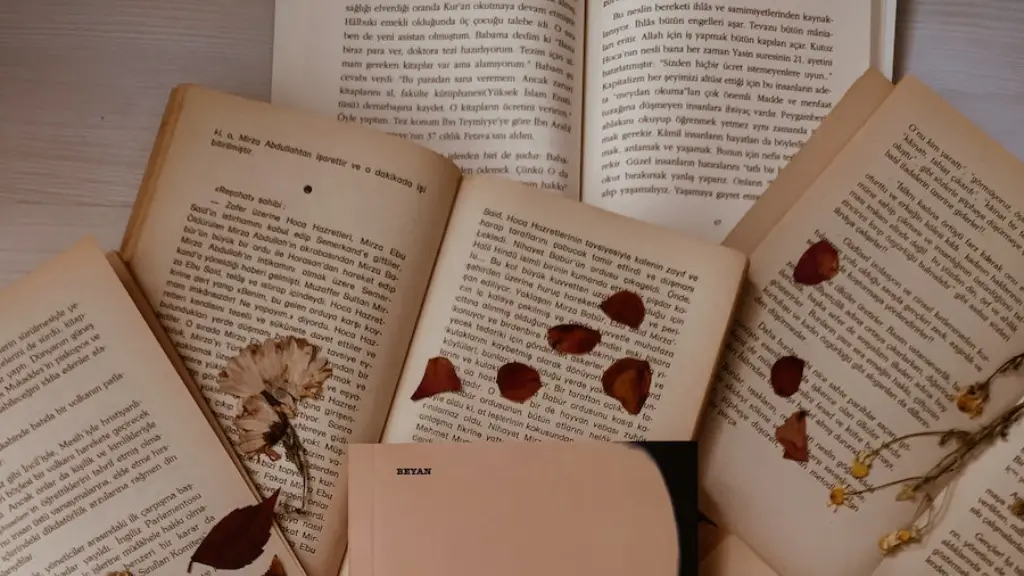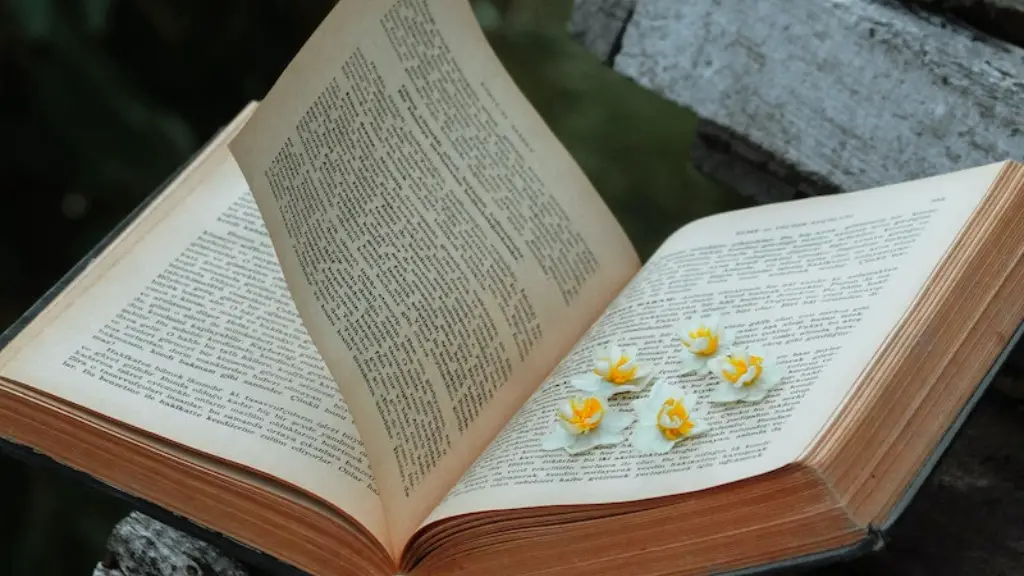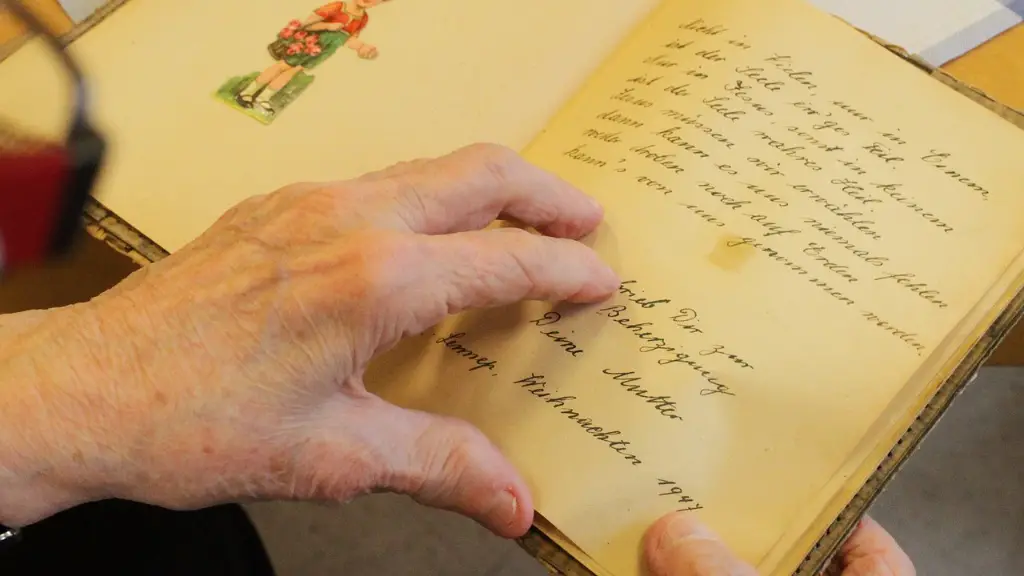What is the meaning of stanza in poetry? This is a question many readers and aspiring poets ask. A stanza is a unit of poetic form; it consists of a group of lines which are traditionally arranged in a particular pattern. They are the building blocks of a poem and they can help writers to create a unique structure or sound. Stanzas can be used to create rhythms, give a poem structure and add emphasis to certain words and ideas. The number of lines in a stanza can vary and some even go on for many pages.
The word ‘stanza’ comes from the Italian language and means a ‘room’ or ‘stop.’ This suggests that the poem is split into seperate parts or ‘rooms.’ In this case, each stanza is part of the poem, but it also has its own meaning or message. This is why each stanza needs to stand on its own and be self-contained; it should be able to tell a story even if it doesn’t connect directly to the wider poem.
There are many different types of stanzas. One of the most common is the four-line stanza, known as a ‘quatrain.’ A quatrain has a specific rhythm and rhyme scheme and it is used in many popular songs and poems. Another popular type of stanza is the villanelle; it has a strict rhyme and repetition structure. There are many more forms, from the sestina to the rondeau.
The use of stanzas is important for poets and readers. As a reader, you need to be able to identify these stanzas in order to understand the poem. Each one contains its own story and emotion, and by looking at the poem as a whole you can begin to piece together the complete picture. As a writer, you need to make sure that each stanza contains enough information to make it meaningful, without giving away too much of the poem’s story.
In addition to the traditional forms, there are also less formal stanzas like the ‘free-form,’ which has no specific rhyme scheme or meter. This type of stanza is used by many modern poets and it allows them to explore new ideas and expressions. It also gives readers more freedom to interpret the poem in their own way.
Overall, stanzas are an integral part of poetry. They provide a unique structure that can help readers to understand the poem and writers to tell their stories. The use of different types of stanzas can also add emphasis and emotion to a poem, as well as variety and interest.
Focussing on Traditional Forms
There are a wealth of traditional forms that a poet can draw from to create a stanza. As well as the aforementioned quatrain and villanelle, there are numerous other stanza formats. From the sonnet, which is traditionally fourteen lines and typically written in iambic pentameter, to the more complex sestina and pantoum, these traditional forms allow poets to create an intricate web of rhyme and meter.
Whilst not everyone may be familiar with the nuances of each form, the beauty lies in the challenge of undestanding and mastering them. The challenge of employing these traditional forms and making them your own, is an important part of the poetic process. When managed successfully, they open up your writing to newfound heights of complexity, richness and artistic vision.
Their use is also an effective way to express and discuss complex topics, in a manner that is both poetic and eloquent. For example, the power of the fourteen line sonnet is often harnessed by writers to explore a thematic concept in depth, or to express a competing set of ideas. In the skilled hands of a poet, the traditional forms can become the basis for something truly original and vibrant.
In short, the traditional forms of stanza can provide a powerful resource for poetic expression. Whilst they may require some initial learning and practice, it is a rewarding journey, that results in a more intricate understanding of meter and rhyme, as well a more confident and creative use of language and poetic devices.
Implications and Symbolism
The use of stanzas and the structure they impose can provide deep insights into a poem’s underlying meaning. The way a poet arranges their stanzas can tell us a lot not just about their techniques, but also what ideas and emotions they are trying to portray. Utilising this form can often generate new thoughts and perspectives that may not become clear without the completion of a poem.
Stanzas can also add emotional undertones to poetry. By focusing on the repetition of words and lines, the poet can give a certain phrase or feeling additional emphasis. Furthermore, this repeating structure can be used to return to a central theme throughout the poem and tie it together as a cohesive work.
The number of lines in stanza can also have symbolic importance. For instance, a five-line stanza could suggest complexity, with each line representing a different aspect of the theme, while a six-line stanza could signal the importance of a journey or cyclical nature. These different formats can also be used to signal a change or transition within a poem.
Overall, the use of stanzas is much more than just a structural tool. It can shape the meaning of a poem and tell its own story. Used effectively, it can be the perfect way to express complex ideas and connect with your readers on an emotional level.
Impact on Language
The way we use stanzas can also impact our language. For example, a common technique in poetry is to repeat similar phrases or words throughout a poem in order to create a pattern and emphasise our message. This technique can be used to create emphasis, rhythm and structure in our poetry, while also helping us to become better readers and writers.
It can also help to create a more vivid picture and resonate with our readers. Through creating an interplay of words, stanzas can activate our readers’ imaginations and suggest visual cues and connections. As a result, our readers may find themselves actually experiencing the poem, which can be incredibly powerful.
Additionally, stanza-by-stanza expression of ideas can help foster creativity and innovation in writers. Typically, the traditional stanza forms provide a framework for creativity, which can then be moulded and modified as desired. This can be an effective way to challenge ourselves to come up with new and innovative ideas. It can also help us to break away from our typical ideas and explore new angles to our themes.
Finally, understanding stanzas can help us to be more mindful readers and listen a bit better. Without the boundaries and frameworks imposed by the stanza form, a poem can more easily meander and lose its intended meaning. Conversely, understanding the structure of a poem can help us appreciate it more and even draw connections between lines or stanzas to make more sense of the full message.
Advancing Poetry with Stanzas
Overall, the presence of stanzas can be felt throughout the world of poetry. Whether used in traditional or modern formats, they can help us unlock some powerful emotions and ideas. As well as providing structure, they can be a vehicle for greater creativity and imagination. They also have the ability to open readers up to whole new worlds and challenges, whilst also helping writers to craft more meaningful and effective works.
Advances in technology and digital platforms have also enabled poets to access broader audiences and create new ways of sharing their works. This has led to a rise in more creative forms of stanza structure, as well as hybrid forms that combine traditional and modern elements. Through these innovations, poets can capture wider attention and bring people closer to their works.
So, the use of stanzas can add greater depth and texture to poetry, as well as help poets to reach wider and more diverse audiences. With the correct application, it can be a powerful way to express complex emotions and themes, and enrich the reader’s experience.
Using stanzas is also a great way to support and embrace the creativity of both readers and writers while still providing a framework. The sense of freedom and exploration they offer can exhilarate the reader and perhaps offer the poet the opportunity to demonstrate their skills and develop their own style.





